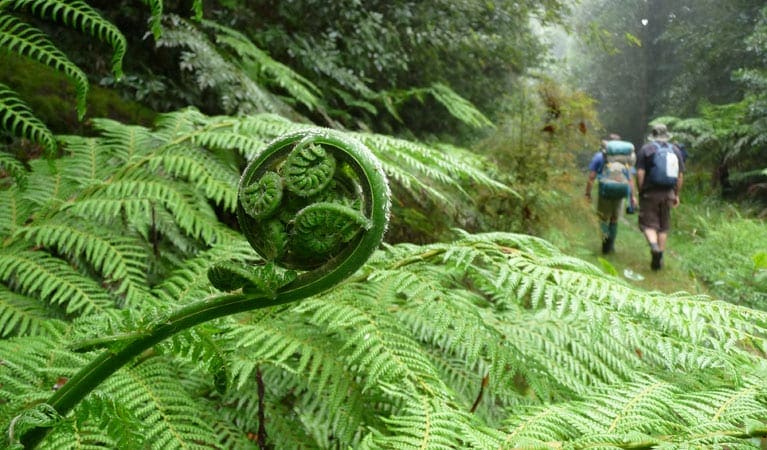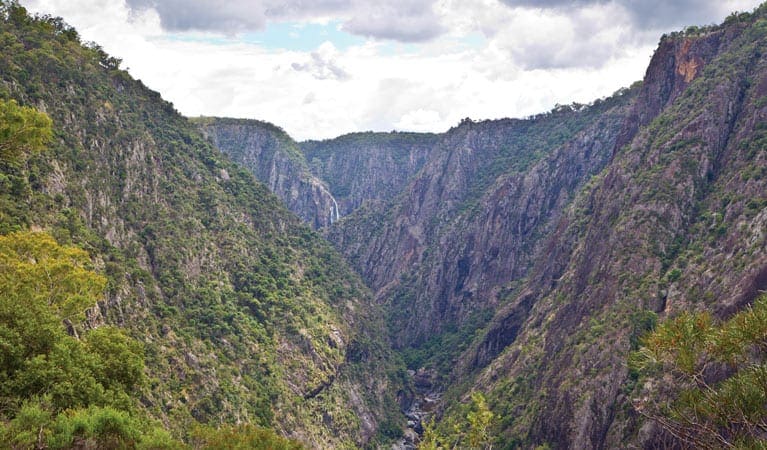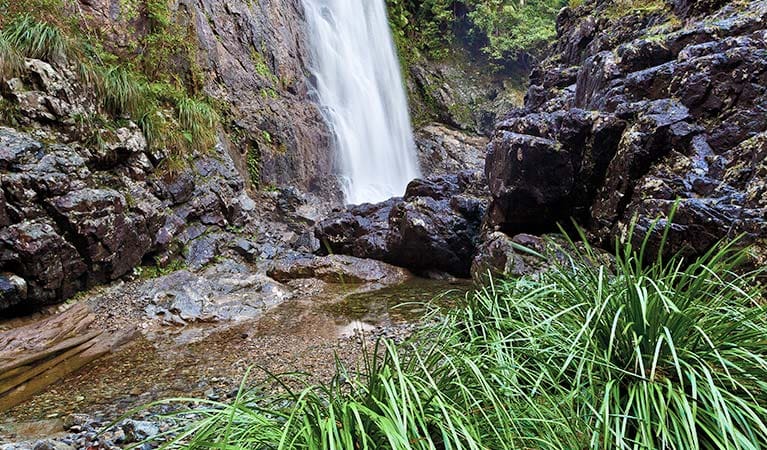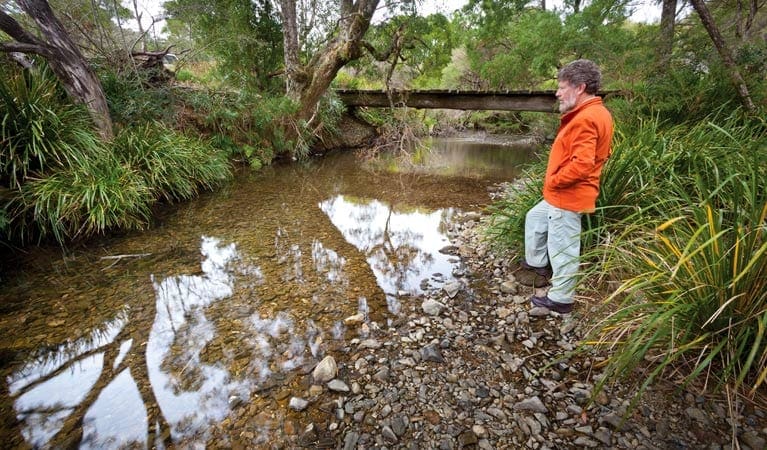Trail Fast Facts
Cathedral Rock track is a 6km, grade 5 hike in Cathedral Rock National Park, New South Wales. This hike typically takes 3.5 hours to complete.
Hike Overview
The Cathedral Rock track, near Barokee campground, offers an exhilarating challenge and breathtaking panoramas across the New England Tablelands. Ascend to the summit and claim your natural throne, perched atop 200 meters of stacked boulders – a true ruler's view.
The track is easily accessed from Barokee campground. Follow the clockwise circuit through sub-alpine woodland until you reach the summit turnoff. Prepare for some serious "rock-hopping" – the next 400 meters involve clambering over boulders and navigating crevices.
On your return journey, the circuit winds through a protected valley teeming with manna gums. For an unforgettable experience, intrepid hikers can tackle the climb at sunrise or sunset, headlamps blazing. Don't forget to pack your camera to capture the stunning vistas, a raincoat and warm clothes for changing weather, and a celebratory flask of coffee to enjoy at the peak.
Track Grade
Grade 5 (Difficult) - Walks for the Most Experienced: Grade 5 represents the most challenging walking tracks on the AWTGS. These are only recommended for very experienced and fit walkers with specialised skills, including navigation and emergency first aid. Tracks are likely to be very rough, very steep, and unmarked. Walks may be more than 20 kilometers. These challenging walks demand a high level of fitness and experience to navigate difficult terrain, significant elevation changes, and potentially unformed paths.
Tips
- Please be aware that boulders along this walk will be slippery when wet
- Remember to take your binoculars if you want to birdwatch
Map and GPX file
Max elevation: 1537 m
Min elevation: 1380 m
Total climbing: 236 m
Total descent: -236 m
Trailhead
Sorry, no records were found. Please adjust your search criteria and try again.
Sorry, unable to load the Maps API.
Getting there
The adventure to Cathedral Rock kicks off at Barokee Campground, nestled comfortably within the heart of Cathedral Rock National Park. To get there, you'll start your journey on Waterfall Way. Head west from Ebor for roughly 5 kilometers, keeping your eyes peeled for the turnoff onto Round Mountain Road. After taking this turn, follow the scenic yet narrow gravel road for 8 kilometers. Your destination, Barokee Campground, will be on your right-hand side.
Don't forget, mountain weather can be unpredictable. It's always a good idea to check the forecast before you set out. The road leading to Cathedral Rock can become boggy after rainfall, so a quick peek at the weather report can help you plan accordingly and ensure a smooth journey.
Once you arrive at Barokee Campground, you'll be happy to find that parking is readily available.
Photo gallery
If you’ve got some great shots from this hike, I’d love to see them! Please upload your .jpg files here to help inspire other hikers and show off the beauty of the trail.
A quick note: Uploading your photos doesn’t mean you lose ownership. You’ll be credited for any photos you share, and you can request to have them removed at any time.
About the region
Camp, walk, birdwatch and enjoy scenic views with great picnic spots at Cathedral Rock National Park, just east of Armidale and west of Dorrigo on the New England Tablelands.
Rock-hopping isn’t just for the wallaroos at Cathedral Rock National Park. Hike to the park’s main boulder piles of Woolpack Rocks and Cathedral Rock and scramble to their summits. Then enjoy the superb views across the wilderness landscape of dry eucalypt forest and granite outcrops. The park’s rock formations are particularly photogenic in late-afternoon light or mist.
Take short walks from the campgrounds, or do a long hike between them. For an exhilarating challenge, you can carry your pack for the 10.4km Barokee to Native Dog Creek walk, camp at the other end, and retrace your steps later.
Whether you’re visiting the park for a picnic lunch or camping for a few days, there are plenty of birdwatching opportunities. The screech of the glossy black cockatoo lets you know there’s a flock overhead. You may be fortunate enough to spot the endangered turquoise parrot, and remember to look out for the wedge-tailed eagle silently circling the granite tors.
Suggest an edit
Spotted a change on this trail? Maybe there are new features, the route has shifted, or the trail is permanently closed. Whatever the update, I’d love your input. Your feedback helps fellow hikers stay informed and ensures that our trail info stays fresh and reliable.
Similar trails nearby
Looking for things to do in Cathedral Rock National Park or nearby? Try these similar hikes or bushwalks.
Let someone know
Adventure with Confidence: Register Your Trip Plans
Before you hit the trail, take a moment to fill out our trip intentions form. It’s a simple way to share important details about your hike with family or friends. If things don’t go as planned and you’re not back on time, they can easily notify emergency services, helping to ensure a quick response and reducing worry. Enjoy your outdoor adventure knowing that you’ve taken a smart step for your safety.
Gear to consider
What you carry in your pack will depend on the weather, terrain, time of year, type of adventure, and personal preferences. Having trouble deciding what gear’s right for you? My free planning, food and packing checklists provide an introduction to things your could consider (as well as the Ten Essentials) on your day, overnight and multi-day adventures. Customise your kit according to your personal needs, always considering safety first.
Explore Safe
While planning your hike, it’s important to check official government sources for updated information, temporary closures and trail access requirements. Before hitting the trail, check local weather and bushfire advice for planned burns and bushfire warnings and let someone know before you go. Plan ahead and hike safely.
Weather
Acknowledgement of Country
Trail Hiking Australia acknowledges the Traditional Owners of the lands on which we hike and pay respects to their Elders, past and present, and we acknowledge the First Nations people of other communities who may be here today.






